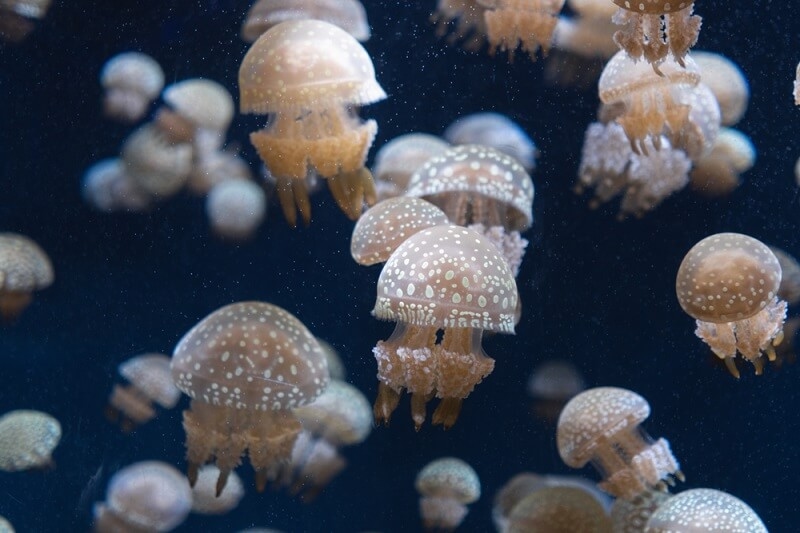
The concept of immortality has fascinated humanity for centuries, often confined to mythology and science fiction. However, in the depths of the ocean, an extraordinary creature defies nature’s laws: the immortal jellyfish (Turritopsis dohrnii). This fascinating organism has developed a unique ability to reverse its aging process, making it one of the only known creatures capable of biological immortality. But are jellyfish immortal? The answer is not straightforward. While this species can potentially avoid death under ideal conditions, it is not invincible. This article delves into the science behind the immortal jellyfish life cycle, its unique biological mechanisms, and the immortal jellyfish death cycle, as well as intriguing details about its immortal jellyfish size and habitat.
The immortal jellyfish was first encountered way back in the 1880s yo, its special biological properties did not come to light until the 1990s. It is remarkable that the researchers have figured out that this jellyfish species possesses an amazing transformation powers of reverting to an early developmental stage of its adult cells. Thus transdifferentiation is the phenomenon that allows the jellyfish to swim with death evoking effects of aging, regenerating continuously and living magically. Since then, mariners have been engaged with the jellyfish for its potential implications in auras of aging and medicine.

Unlike the linear life cycle of most jellyfish destined for death, the immortal jellyfish has a regenerative loop in its life cycle:
This ability gives the jellyfish practically biological immortality, being an exception from the natural laws of aging in a very few instances.
While it can escape the aging process and avoid dying, the immortal jellyfish is still not completely invincible. The death cycle of this immortal jellyfish begins when external forces play a role, such as:
Thus, despite the remarkable ability to avoid aging, this species is not altogether immortal in the true sense. Moreover, scientists continue to investigate the upper limits of the regenerative abilities of the species to determine whether there are biological factors controlling its eventual demise.
Transdifferentiation is key to the immortal jellyfish's biological immortality because it permits specialized adult cells to revert to earlier states or essentially rewind the clock. Thus, while other organisms experience cellular degradation with time, Turritopsis dohrnii can indefinitely regenerate its cells.
The extraordinary process has brought the notice of scientists who work on aging and regenerative medicine. If humans could develop similar techniques, it may radically change every approach to combating age-related diseases. Scientists are currently focused on mapping out the jellyfish genome, trying to see whether any sequences could be extrapolated to target human medicine.
The immortal jellyfish, despite its remarkable biological features, measures typically about 4.5 millimeters (0.18 inches) across, approximately the size of a pinky fingernail. It has a transparent, bell-shaped body, and the inside houses a bright red stomach. With its minute size, it is easily ignored in the vastness of the ocean.
These jellyfish are found in warm and temperate waters all over the world, for instance, in the Mediterranean Sea and the waters off Japan. They are opportunistic animals, as they survive in different marine habitats. Some specimens have even been found previously from the depths of the sea, indicating that the possible area of the distribution before was even wider than anticipated.
The Turritopsis dohrnii is not merely an interesting curiosity; its study has far-reaching consequences on biological research and medicine:
Turritopsis dohrnii has made a remarkable contribution but leaves many questions still unanswered. Some areas of inquiry are still pursued by scientists:
Research into the genetic map of the immortal jellyfish could result in breakthroughs in the study of longevity and medicine. Although the ambition of human immortality remains far away, the research of this tiny jellyfish gives us hope that one day we may know the secrets to a longer and healthier life.
The immortal jellyfish (Turritopsis dohrnii) remains one of nature’s most intriguing anomalies, capable of defying aging through its remarkable life cycle. While it is not truly invulnerable, its unique ability to revert to an earlier life stage grants it a form of biological immortality unseen in most other organisms. Studying this tiny jellyfish may unlock revolutionary discoveries in aging, medicine, and regenerative science. Though we may never achieve true immortality, nature has provided a glimpse of what is biologically possible.
This content was created by AI